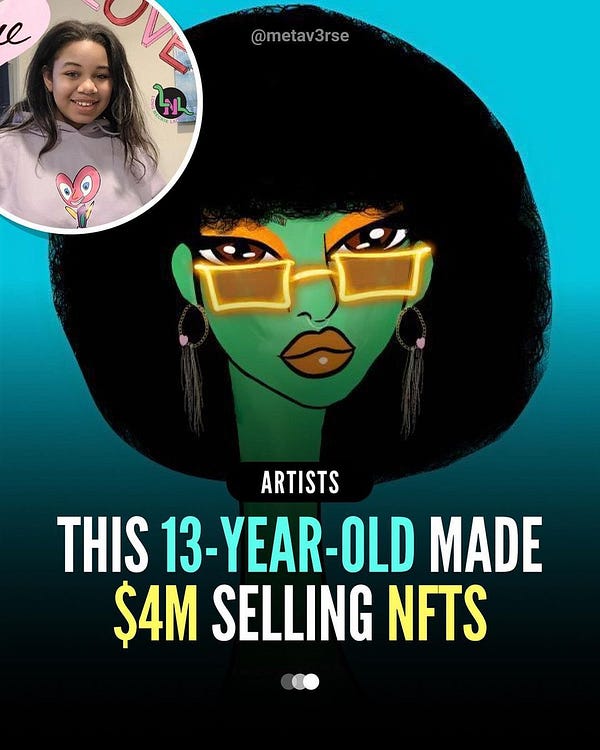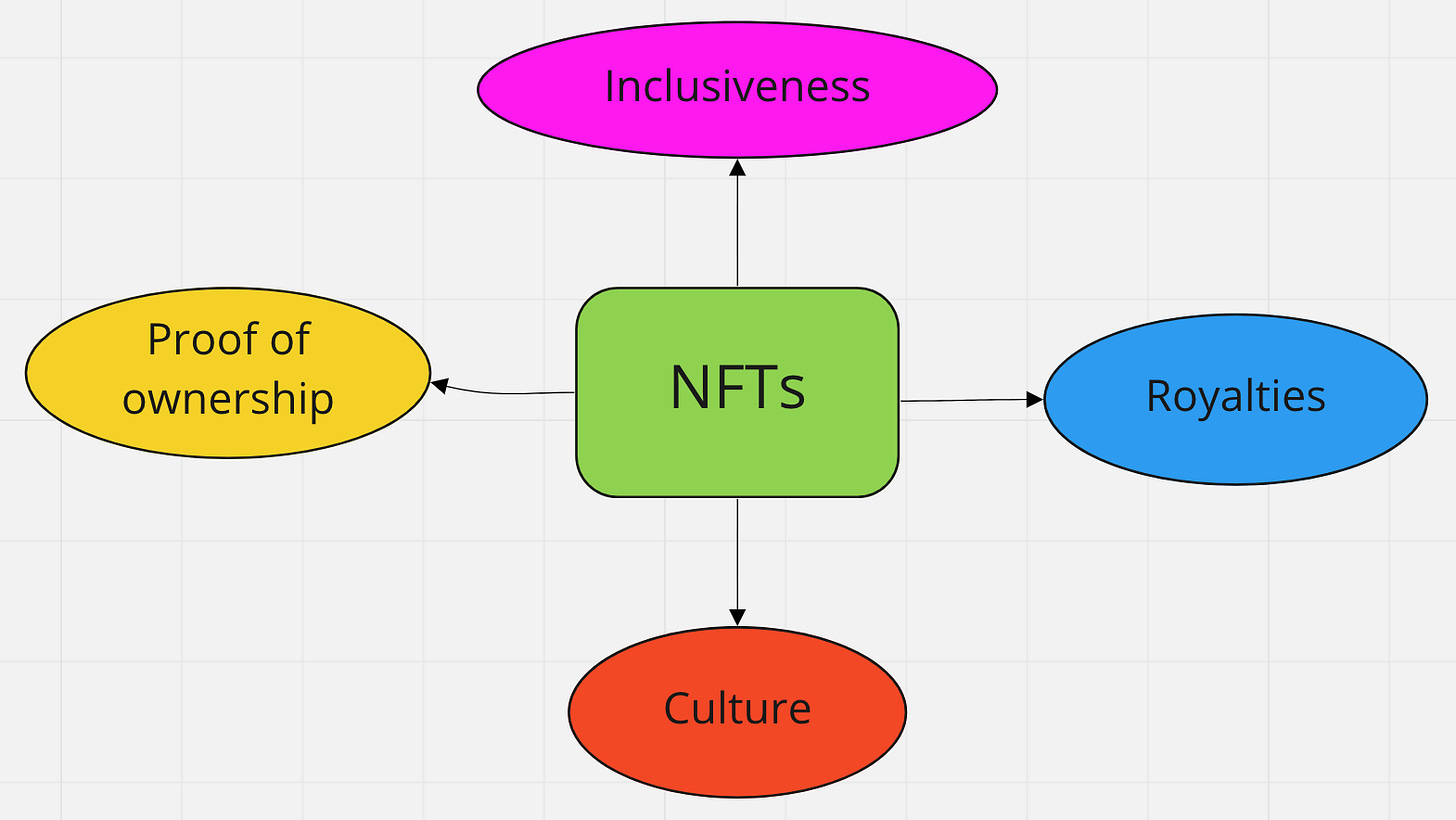What’s up future degenerates, in this article I attempt to reveal how artists and creators can benefit from NFTs. I describe how NFTs provide value to today’s art world and what it means for emerging artists.
I also mention a couple million dollar sales that will never be forgotten.
Overview
To begin, let’s look at what NFTs can be. We’ve all seen how they’re mostly used as PFPs and there is a lot to say about that. Most of them are designed to be used as a profile picture on social mediums to foster a sense of community and belonging, flex wealth and status, or benefit from different types of utility. However, this is only scratching the surface.
Beyond the use of a PFP, what is the value of NFTs for the creator economy?
There is a swarm of emerging artists realising how lucrative it is to adopt blockchain technology for their business. NFTs have a few underrated utilities that can benefit the creator economy: proof of ownership, inclusiveness, artist royalties and culture.
Proof of Ownership
When you buy a house you get the deeds. When you buy a Picasso you get a certificate of provenance. When you buy an NFT you’re not only receiving the piece of digital art in your digital wallet, you’re also receiving proof that it belongs to you. The proof is written in the blockchain – a ledger that records that transaction and cannot be altered.
If you own a Picasso and you’re displaying it on your wall of your living room, you can only show it to whoever comes visit you, be it 5 or 10 people at a time. Art is often bought to store value, or to display value. The most precious, antique and expensive pieces of art are stored in warehouses in certain temperatures to keep them safe and maintain their value – no one gets to see them. Digital art is finally being recognised as there is a way to prove ownership. Thus, it can be traded and there is a market for it.
Today, if you own a 1/1 of XCOPY you can display it to the whole world via social mediums, there is no need for warehouses but it comes at a cost of knowing how to safely store it in a cold wallet. Nevertheless, you can prove that you own it through a digital transaction.
The XCOPY displayed below was last purchased for 1600 ETH, or $7,088,229 USD.
The piece above is Right-click Save as Guy by XCOPY, making a mockery of people who don’t understand the value of proof of ownership and say “Why would I buy it when I can right click and save as?”
Don’t be that guy.
Read the thread below for more information on how leading NFT collector Cozomo de’ Medici, aka Snoop Dogg, bought it for $7M.

Inclusiveness
Would you believe me if I said a 13-year-old artist made over $4M from her NFT collection?


Would she be able to do it in the traditional art market?
Today, a young artist has more access to education than ever before. In the early days, artists would have no option other than using the traditional art market infrastructure: a gallery or an auction house. At a young age, that’s not possible. The NFT space offers that other option.
The traditional art market excludes so many young artist with so much talent. How can a minor be included in an art fair with only champagne and caviar?
That’s how the NFT market is including young digital artists. It’s expanding career opportunities to the young artists that don’t have the medium to sell their art in the traditional market. All they need is their digital art and a digital wallet.
Royalties
In the traditional art market, an artist gets paid from the first sale, and a royalty from the second sale, if he’s lucky. Then that’s it.
If an artist mints his art as an NFT, he can set his own royalty fee (e.g. 5% or 10%). By doing so, he will get paid every single time his art gets sold on the market.
Culture
NFTs make the art world more accessible. It’s not replacing anything. It’s adding on to the previous infrastructure with multiple fronts that benefit the creator economy: proof of ownership, inclusiveness and royalties.
So this is all good until every artist realises that they can leverage this technology. And why wouldn’t they?
Suddenly, the market is injected with millions of different artworks and prices based on speculation. As the technology gets adopted and the creator economy becomes more lucrative than ever before, what gets traded is, essentially, culture:
NFTs as social tokens.
NFTs as a sense of belonging.
NFTs as a flex of wealth and status.
If you agree and you’re so hyped right now, then sorry to be a party pooper but this market won’t last forever. Absolutely, blockchain technology and NFTs aren’t going anywhere. In fact, they will only become more user-friendly and innovative.
However, the bubble will burst and your jpegs will probably go to zero. Yet, this does not mean you should sigh and close the window. Instead, you can see past the bubble and acknowledge this technology to stick around and find the best way to leverage it for your long-term plans – if that’s what you wish to do.
The NFT space is temporary and volatile. Yet, it’s lucrative and rewarding. In any case, if you’re a beginner or an emerging artist, you’ll feel most rewarded if you join it FOR THE CULTURE!
Thank you so much for being here and taking the time to read this.
Good luck!
If you’ve learned a thing or two, liking and sharing would mean the world to me. Please drop a comment if you have any questions and I’ll do my best to answer them. Everything I write is not financial advice. Always Do Your Own Research and only invest what you can afford to lose.
That being said, I hope to see you around again!






Love it man. Keep up the good work!